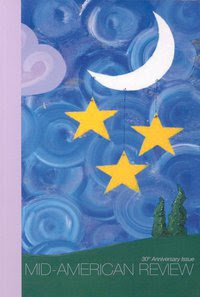>The following review of my short story collection In an Uncharted Country appears in the current issue (Volume XXX) of the Mid-American Review. It is reprinted here by permission.
In an Uncharted Country
by Clifford Garstang
Winston-Salem, North Carolina: Press 53, 2009
204 pages. $14, paper.
Clifford Garstang’s debut book, In an Uncharted Country, helps decipher a familiar world, a country that many dwell in and yet may not know. With recognizable plotlines and characters who might live next door, the prizewinning author transforms the ordinary view into a rare vista.
Almost all of the stories that comprise In an Uncharted Country have previously appeared in literary journals. But the collection presents these stories at their best—as the intricate concatenation they are. Garstang offers a short story cycle that follows the tradition of Sherwood Anderson, James Joyce, and Ernest Hemingway. As is the modus operandi of his predecessors, Garstang binds his collection with many threads. Characters reappear. The young Tim and Teddy of the first story are grown by the last.
 The stories are thematically linked, each revealing another version of grief, a reconsideration of gender and familial roles. The book charts generational reminiscences and resists the idea that “adult” and “child” are distinct identities. Its characters try to gain a secure footing as they tread the same ground—both metaphorically and literally. The stories share a location: the fictional town of Rugglesville, in western Virginia. This setting is a living force, dynamically shaping those who populate this book. A porch serves as an emotional threshold. A flood wipes out a bridge and hinders people’s ability to navigate. A burning tree spreads its flames and offers a sign, an embodiment of startling youth. The weather ebbs away, concurrent with a wife’s faint breaths. The sky helps narrate a relationship in the lines, “He just looked over at her once in a while as if to make sure she was still there. Wood smoke drifted through the open windows. The night sky was dense.”
The stories are thematically linked, each revealing another version of grief, a reconsideration of gender and familial roles. The book charts generational reminiscences and resists the idea that “adult” and “child” are distinct identities. Its characters try to gain a secure footing as they tread the same ground—both metaphorically and literally. The stories share a location: the fictional town of Rugglesville, in western Virginia. This setting is a living force, dynamically shaping those who populate this book. A porch serves as an emotional threshold. A flood wipes out a bridge and hinders people’s ability to navigate. A burning tree spreads its flames and offers a sign, an embodiment of startling youth. The weather ebbs away, concurrent with a wife’s faint breaths. The sky helps narrate a relationship in the lines, “He just looked over at her once in a while as if to make sure she was still there. Wood smoke drifted through the open windows. The night sky was dense.”Yet, as much as the stories bear resemblances, this is not a collection of assembly-line creations put together with the same fundamental parts. Rather, Garstang’s techniques are varied, and each character speaks with a distinctive voice.
Read Garstang for his handle on craft, his ability to imply. Read the book because it’s a navigational tool. With clear-eyed precision, it maps the unseen: It draws out how we locate ourselves in a world of knotty relations and turbulent climates. It accesses the unreachable parts of an identity. It grants sight of others’ private days. In a sense, the book trespasses for us, enters an off-limits site. Follow it.


>That's a great review. Congrats, Cliff.
>Cliff:
Wonderful review. Congratulations. I bet you're a great teacher. I considered enrolling in your online class but my day-job would interfere at the moment.
Cheers,
Ann